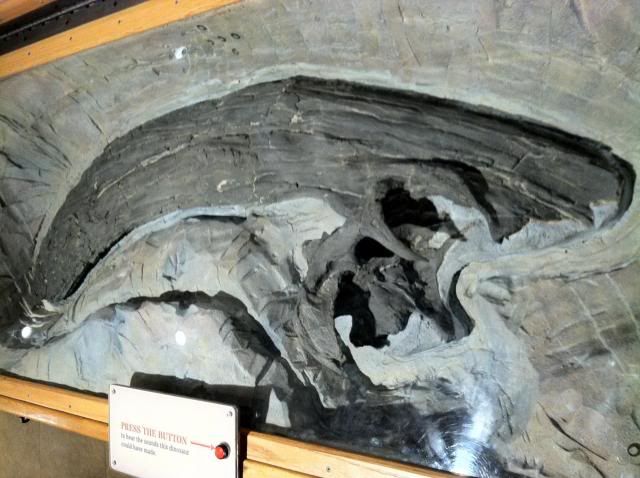Last month’s challenge was more of a challenge than I actually thought it would be, but that was not because of the crazy looking critter. That was because of my poor photo quality. I just want to say that I am sorry about that. I guess, since I know what it was, I thought the photo was okay, but it obviously was not. I will do better in the future.
With all that said, who was able to identify the weird looking critter in the bad photo? It was Mugnuts and he was the only person to guess the correct answer.
Eobasileus cornutus!!! This is what He-Man should have rode.
This crazy looking critter is Eobasileus cornutus, and I agree that it would have been a much better companion for He-Man than Battle Cat.

E. cornutus is very rare in the fossil record and is only known from Colorado, Utah, and Wyoming. It lived during the Eocene 46.2 to 40.4 million years ago. During that time, E. cornutus would have been one of the largest animals on earth. It was ~4 meters from snout to tail, ~2 meters at the shoulder, and weighed in at ~4000 kg. Like all large animals, E. cornutus was an herbivore. It is not known if E. cornutus lived a terrestrial life like a rhinoceros or a semi-aquatic life like a hippopotamus.
E. cornutus belonged to the Uintatheriidae clade. This is a family of large herbivorous mammals with unique skulls. E. cornutus had saber tusks that extended from their top jaw. Their bottom jaw had a bony protrusion that protected the tusk when the mouth was closed. E. cornutus also had three pairs of blunt horns. The first pair was behind the eyes, the second was between the eyes and nostrils, and the third was atop the nostrils. This assortment of horns and tusks is shared among most of the Uintatheriidae. Judging from related animals in the Uintatheriidae clade, the horns and tusks were most likely sexually dimorphic, wherein males would have used them to joust for females. However, there are not enough fossil remains to determine any use of the horns and tusks at this time.
Moving on to this month’s challenge:

(Taken at the New Mexico Museum of Natural History and Science)
Once again, sorry about the quality of last months photo and I hope this month’s is better. Good luck.